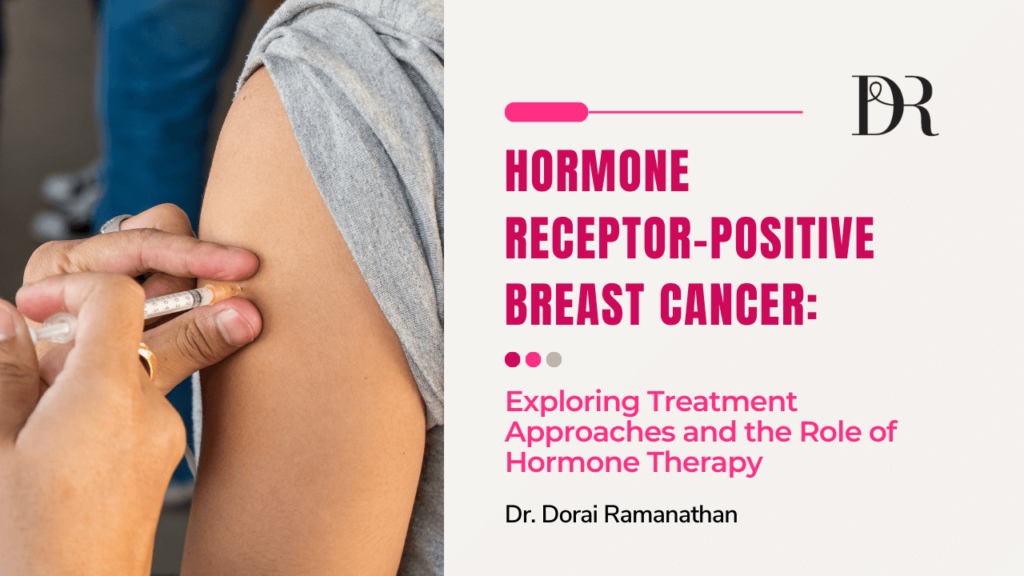Hormone receptor-positive breast cancer is the most common subtype, accounting for a significant percentage of breast cancer diagnoses. In this blog, we will delve into the characteristics of hormone receptor-positive breast cancer, its treatment approaches, and the essential role of hormone therapy in managing this type of cancer.

Understanding Hormone Receptor-Positive Breast Cancer
Hormone receptor-positive breast cancer is characterized by the presence of hormone receptors, namely estrogen receptors (ER) and/or progesterone receptors (PR), on the surface of cancer cells. These receptors play a vital role in the growth and proliferation of cancer cells, making them prime targets for treatment.
Treatment Approaches
Surgery
Surgical intervention, such as lumpectomy or mastectomy, is typically the initial treatment for hormone receptor-positive breast cancer. It involves removing the tumor and surrounding tissues to achieve optimal disease control.
Radiation Therapy
Following surgery, radiation therapy may be recommended to target any remaining cancer cells and reduce the risk of local recurrence.
Systemic Therapy
- Hormone Therapy: Hormone therapy is a cornerstone of treatment for hormone receptor-positive breast cancer. It aims to block the effects of estrogen or lower estrogen levels in the body, thereby inhibiting the growth of cancer cells. Common hormone therapy options include selective estrogen receptor modulators (SERMs), aromatase inhibitors (AIs), and gonadotropin-releasing hormone (GnRH) agonists.
- Chemotherapy: In some cases, chemotherapy may be recommended in addition to hormone therapy, especially if the cancer is more aggressive or has spread to lymph nodes or distant sites.

Hormone Therapy in Detail
Hormone therapy works by interfering with the hormones that fuel the growth of hormone receptor-positive breast cancer cells. Different types of hormone therapy target specific hormone pathways and include the following:
Selective Estrogen Receptor Modulators (SERMs)
Medications like tamoxifen and raloxifene block the estrogen receptors, preventing estrogen from binding to cancer cells and stimulating their growth.
Aromatase Inhibitors (AIs)
AIs, including letrozole, anastrozole, and exemestane, reduce the production of estrogen in postmenopausal women by inhibiting the aromatase enzyme.
GnRH Agonists
GnRH agonists, such as goserelin and leuprolide, lower estrogen levels by suppressing ovarian function, typically in premenopausal women.

Benefits and Considerations
Hormone therapy offers several benefits for hormone receptor-positive breast cancer:
- Reduces the risk of cancer recurrence.
- Minimizes the need for aggressive treatments like chemotherapy.
- Can be administered orally or through injections, enhancing convenience.
- Generally well-tolerated with manageable side effects.
It is essential to discuss the potential benefits and considerations of hormone therapy with your healthcare provider to determine the most appropriate treatment approach for your specific case.
Conclusion
Hormone receptor-positive breast cancer represents a significant subset of breast cancer diagnoses. With advancements in treatment approaches and the central role of hormone therapy, there are effective strategies available for managing this type of cancer. By understanding the characteristics of hormone receptor-positive breast cancer and collaborating closely with healthcare providers, individuals can access personalized treatment plans that optimize outcomes and improve overall well-being.



